

3D Printing Sustainability – Solving the Plastic Trash Crisis.
Students in various universities in America have used recycling materials to create 3D printing and also used 3D printed waste to create new and recycled print which is fascinating. We don't have to sacrifice too much new materials to create something new, we can always reuse materials that had been discarded – giatran
Influencers can combat fast fashion’s toxic trend. I make a couple of appearances in Fashion’s Dirty Secrets.

At 43, I’d view my casting as that of a wise(ish) elder. Because those who wield true influence over fashion brands are young. Youth gone wild: how young consumers are transforming brands - Inside Packaging. Sustainability, premiumisation, transparency and traceability - all these trends that have come to define the shape of the consumer industries in recent years have in many ways been a reaction to a younger and increasingly conscious consumer base.
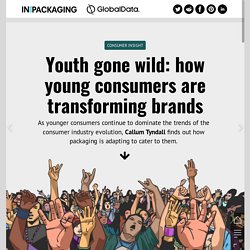
That is not to say that older consumers are not coming along with the change, but the trends have really found their roots in millenials and Gen Z; and it is these consumers that are driving the change forwards. Consider the Extinction Rebellion, a climate protest largely driven by very young people, including children, that nevertheless forced fresh public reckoning with environmental issues. The fashion industry emits more carbon than international flights and maritime shipping combined. Here are the biggest ways it impacts the planet.
Fast fashion makes shopping for clothes more affordable, but it comes at an environmental cost.The fashion industry produces 10% of all humanity's carbon emissions, is the second-largest consumer of the world's water supply, and pollutes the oceans with microplastics.Visit Business Insider's homepage for more stories.
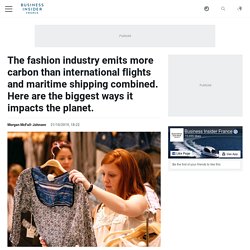
Some parts of modern life are, at this point, widely known to cause environmental harm — flying overseas, using disposable plastic items, and even driving to and from work, for example. Plastics in our oceans – How one Canadian is trying to clean up - Montreal.
Technology has brought convenient gadgets and tools. Technology has now also taken responsibility with the polluted environment. Scientists has developed hydrothermal liquefaction which use high temperature to turn garbage to fuel which is a very promising solution to make our environment cleaner. – giatran
New York Fashion Week: How retailers are grappling with sustainability. Protesters display banners during a fashion show in a polluted river basin planted mostly with rice in Rancaekek district near Citarum river located in western Java island as part of a campaign by environmental organization Greenpeace for top international fashion brands to remove toxic chemicals from their supply chains in Indonesia and address water pollution.
The generations of Gen Z and Millennials are taking the issues with fast fashion seriously. They care how fast fashion can create a big waste which is harmful to the environment. Young people have started to educate themselves on how they can make a change to solve the problem; would be a good sign for a cleaner environment in the near future. – giatran
Romeo Gacad | Getty Images Hannah George grew up shopping at the malls in Ithaca, New York, where she stocked up on the latest affordable trends at retailers such as H&M and Forever 21.
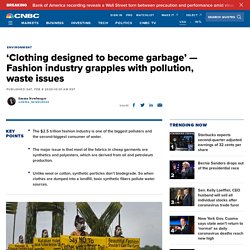
The 25-year-old abruptly stopped, however, when she went to college and learned about fashion industry pollution, a major driver of climate change. Canada-wide ban on many single-use plastics on track for 2021, minister says. A national ban on many single-use plastics is on track for next year after a government report concluded Thursday that there is more than enough evidence proving plastic pollution is harmful.
Canadian Government has been taking the issue with the current stage of the environment seriously by banning plastic straw as the first step. In the near future, they will again solving the problem by banning single plastic uses which will bring benefits for our environment – giatran
“We will be moving towards a ban on harmful single-use plastics and we will be doing that in 2021,” said Environment Minister Jonathan Wilkinson.

The federal Liberals promised last June they’d seek to ban plastic versions of a number of products such as straws, take-out containers and grocery bags. The ban would happen under the Canadian Environmental Protection Act, which requires a scientific assessment of the problem first. A draft version of that assessment was released Thursday.
It will be open to public comment until April 1. After the Coronavirus Pandemic, Will Fashion Rebuild Sustainably? The sheer calamity that has caused in the blink of an eye, severely impacting global industries, is foreboding of the challenges ahead.

They include a fashion industry and consumer that could look completely different than they do today. Consumers are already professing to open their eyes to a new reality after the crisis passes. Rent And Buy Vintage Clothes During Coronavirus (Covid-19) Jeremy MoellerGetty Images For those lucky enough to maintain a steady income throughout the Coronavirus (or Covid-19) outbreak, supporting small businesses and circular fashion may still be on the cards.
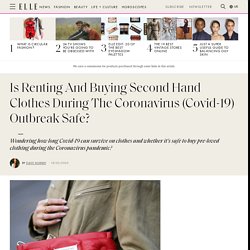
Whether you are looking to buy a vintage spring jacket for a socially-distant picnic on your ill-timed birthday (how are all the Pisces babies doing?) Coronavirus is forcing fashion influencers to rethink their curated aesthetics. Elizabeth Savetsky, an influencer who lives in New York, has kept her Instagram feed pristine up until now.

In every past photo, she wears an enviable outfit with perfectly done hair and, occasionally, her smiling, tall plastic surgeon husband. - The Washington Post. Fashion and Masks in the Age of Coronavirus. The surgical face mask has become a symbol of our times.
The pandemic is shaping people's ideas about wearing mask. Even though wearing masks has been completely normal in Asia, not too much in Europe. Wearing mask now is a sign of taking action towards to pandemic, to protect oneself, to protect the community. Fashion brands have also picked up wearing marks on runways. – giatran
If there is a symbol of the current confusion and fear, the misinformation and anxiety, generated by the spread of the new coronavirus, it is the surgical face mask.
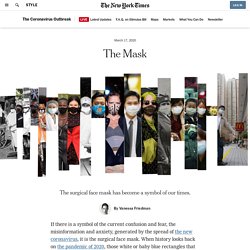
When history looks back on the pandemic of 2020, those white or baby blue rectangles that hide the mouth and nose, turning everyone into a muzzled pelican, will be what we see. The masks began appearing almost immediately after the infection was identified, first in Asia, where masks were already common, and then in Europe. These days they are everywhere. How Coronavirus and Work-From-Home Culture Will Change Fashion: What Will We Wear Now? We already know that the outbreak is affecting the fashion and footwear industries in seismic ways.
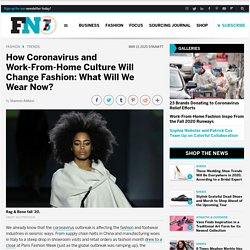
From supply chain halts in China and manufacturing woes in Italy to a steep drop in showroom visits and retail orders as fashion month drew to a close at Paris Fashion Week (just as the global outbreak was ramping up), the economic implications are just starting to reveal themselves. But how will the pandemic, and its social consequences, affect what people wear? Fashion might seem like the last thing we should be thinking about during a global health crisis.
But looking at shifting attitudes and lifestyles in a fast-changing scenario could guide designers, brands and retailers to adjust their approaches for the rest of the year and help keep sales propped up. Must Read: How the Fashion Industry Will Change After the Pandemic, Why Some Stores Are Closing Both Retail and E-Commerce. These are the stories making headlines in fashion on Monday. How will the fashion industry change after the pandemic? In an opinion piece for Business of Fashion, Angelo Flaccavento shares his thoughts about the fate of the fashion industry, which has been hard hit by the deadly Covid-19 outbreak, writing, "...this crisis is an opportunity to edit down the superfluous, to regain our long-lost soul, to do away with heavy marketing and the insidious economy of influencing. " {Business of Fashion} Could I go a year without buying any new clothes? I can’t remember a new year when I haven’t made a resolution.
Get more sleep, drink more water, drink less booze, eat more fruit, learn Spanish. But there was only one pledge I’ve ever managed to stick to for longer than a few weeks, and possibly the only one that made me feel better about myself instead of worse – I broke up with fast fashion.